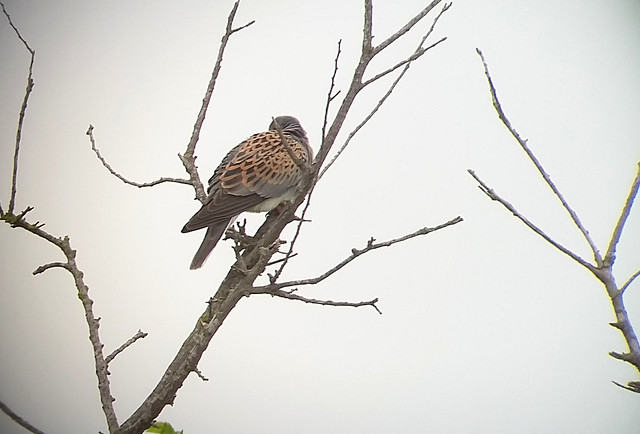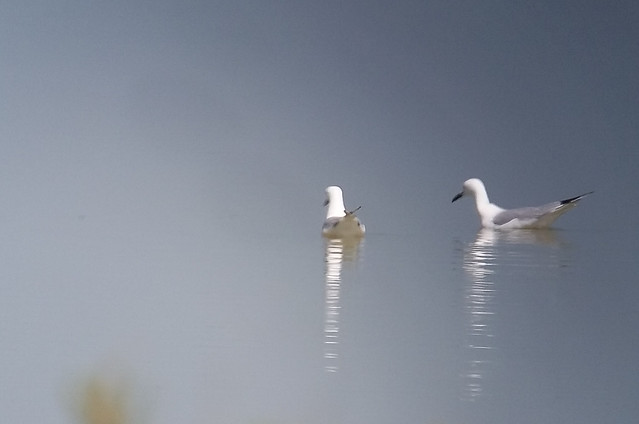This turtle dove — one of several we were lucky enough to run across today — was tired after the long Mediterranean crossing, but our little group was full of energy and eager for our first excursion into the Rhône delta. We left Arles in a dense overcast, which gave way to warm sunshine as the morning went on, even heat in the late afternoon.
It was stop and go, in the van and out of the van for roadside birds, until we got to the shores of the Etang de Vaccarès at La Capelière, where it seemed as if every step was interrupted by something new: white storks on nests, gangs of greater flamingos honking on the ponds, a flyover by the first European bee-eaters of the trip. It would have been almost too much, if there were possibly such a thing as “too much” for birders.
The wide-open flats of the Fangasser, just to the south, were every bit as good as we’d hoped they would be. Kentish, little ringed, and black-bellied plovers gave beautiful looks, though we could only imagine what nifty rarities must have been mixed in with the clouds of dunlin overhead. Common greenshanks were scattered everywhere, while dense flocks of pied avocets were wading and swimming through the deeper water.
Of all the fine birds of a very fine place, I still think of the slender-billed gull as the Camargue specialty. These dark-billed beauties are, happily, much more common than they were even twenty years ago when I first birded their out-of-the-way haunts, but it is every bit as exciting today to see “snouties” as it was back when they were a mild rarity.
It was already time for lunch, so off to Salin de Giraud just down the road, with a pause along the way for a nice close look at a short-toed snake eagle.
Of the dozen birding spots between there and Arles, we chose the Verdier marshes at Le Sambuc to walk off yet another good meal. It was hot, well into the 80s F, and not much was stirring. Our first purple heron was in the ditch, and common cuckoos, common nightingales, and Cetti’s warblers — nearly all of them characteristically invisible — provided a classic Mediterranean soundtrack.
Tomorrow: the cliffs of the Alpilles.




